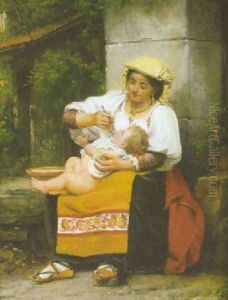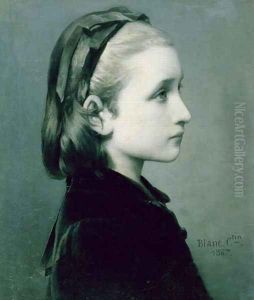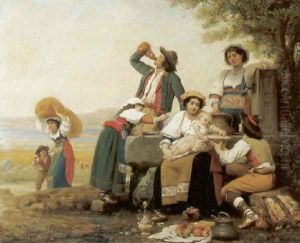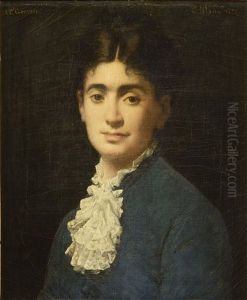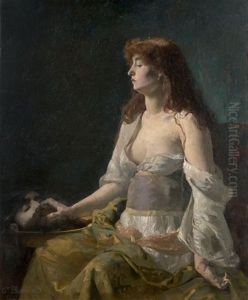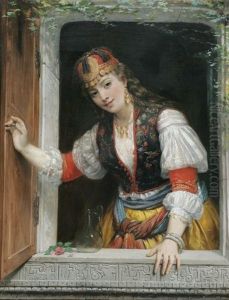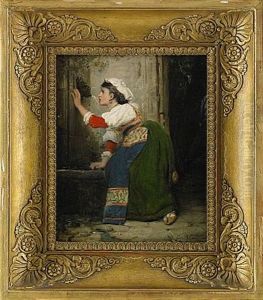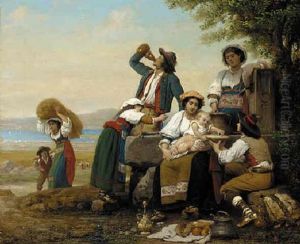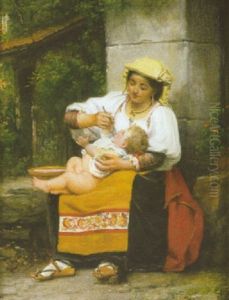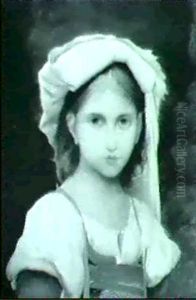Celestin-Joseph Blanc Paintings
Célestin-Joseph Blanc was a French painter who is not as widely recognized as some of his contemporaries, but he was a talented artist of the 19th century nonetheless. Born on November 14, 1842, in Castres, France, Blanc showed an early interest in art and went on to study at the École des Beaux-Arts in Paris. His education was under the tutelage of renowned artists such as Alexandre Cabanel, a painter who was known for his historical and mythological works, and who also taught famous painters like Édouard Manet and Henri Regnault.
During his career, Blanc worked primarily as a genre painter, creating scenes of everyday life that reflected the society of his time. His style was influenced by the academic art traditions of the period, which emphasized classical techniques and subjects. Despite the prevalence of Impressionism during his lifetime, Blanc remained committed to the academic style, which may have contributed to his relative obscurity in the face of the revolutionary changes in the art world led by the Impressionists.
Blanc exhibited his work at the Paris Salon, an official art exhibition of the Académie des Beaux-Arts in Paris, which was the most prestigious place for artists to showcase their talent. His paintings received positive attention, and he was awarded medals for his submissions in 1865 and 1867, which was a significant achievement for any artist of that era.
Unfortunately, Célestin-Joseph Blanc's life was cut short when he died at the age of 45 on August 17, 1888, in Paris. Despite his early death, he left behind a body of work that, while not as well-known today, contributes to the rich tapestry of 19th-century French painting. His works can be found in various art museums and private collections, where they continue to be appreciated by those who seek to understand the breadth of styles and techniques that characterized the art of that period.
